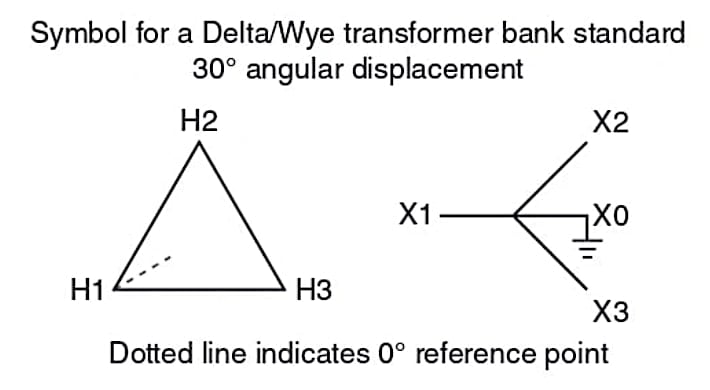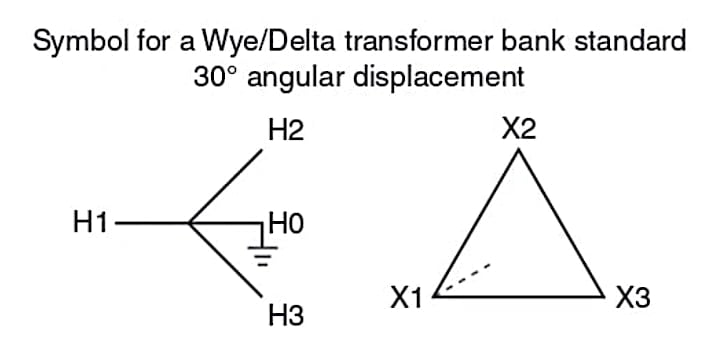Pros and Cons: Three-Phase Transformer Connections
This article examines three-phase transformer connections and their advantages and disadvantages, which are crucial for effectively matching transformers to electrical needs.
The primary types of three-phase transformer connections are fundamental in achieving efficient power distribution that caters to diverse electrical needs. Each has advantages and disadvantages regarding conductor size, insulation requirements, and harmonic currents. Understanding these connections is vital to effectively configuring transformers to match specific electrical applications.

Image used courtesy of Adobe Stock
Types of Transformer Connections
The three windings of the transformer primary and the transformer secondary can be connected in a delta or wye to create a three-phase transformer. There are four types of three-phase transformer connections:
- Delta/delta
- Delta/wye
- Wye/delta
- Wye/wye
The standard is to list the H winding connections first, followed by the X winding connections. Each connection type can transform the same three-phase primary line voltage into the same three-phase secondary line voltage.
The phase voltages of the various connections will sometimes be different, however. For example, to transform 12,500 V to 480 V, one could use a delta/delta transformer connection with three 12,500 V – 480 V single-phase transformers, a wye/delta transformer connection with three 7,225 V – 480 V single-phase transformers, a delta/wye connection with three 12,500 V – 277 V single-phase transformers, or a wye/wye connection with three 7,225 V – 277 V single-phase transformers. Each has advantages and disadvantages.
The diagrams of the transformer connections in this article will be for standard connections and will point out the angular displacement between the primary and secondary windings. Angular displacement measures how much one voltage is out of phase with another. Connecting three single-phase transformers in ways other than the standard connections shown here will result in transformer secondary line voltages that may have the same value but will be out of phase with the secondary voltages resulting from the standard connection. When the secondary voltages are out of phase, they cannot be paralleled.
Delta/Delta Connection
The delta/delta connection, as shown in Figure 1, is used for applications where only one secondary voltage is required or where the majority of the load consists of three-phase equipment, such as factories that have large three-phase 480 V or 240 V motor loads and relatively small 120 V lighting and receptacle loads. The number of turns required for the primary and secondary windings is directly proportional to the primary and secondary voltage required. As a result, there is no advantage in using this transformer connection to transform voltages that differ greatly.


Figure 1. A standard 0° angular displacement delta/delta connection. Image used courtesy of Ahmed Sheikh
Advantages
- The fact that the phase current is only 57.8% of the line current means the conductors of each single-phase transformer do not have to be as large as the line conductors supplying the three-phase load.
- Harmonic currents tend to cancel out, and the transformer provides good isolation of electrical noise between the primary and secondary.
- The secondary voltage will fluctuate less with surges in load currents.
- Three-phase voltage can still be supplied in the open delta if one of the three single-phase transformers fails, although at only 58% of the original capacity.
Disadvantages
- The fact that there is only one voltage available from the secondary means there must be other transformers to supply the lighting, and receptacles may be required.
- The conductors of the primary winding must be insulated for the full primary voltage, which requires extra insulation for high primary voltages.
- No point on the secondary will provide a common ground. As a result, voltages to the ground can reach very high levels.
Delta/Wye Connection
This type of transformer connection, shown in Figure 2, is used when more than one voltage is required on the secondary, such as when three-phase, 208 V motor loads and 120 V lighting and receptacle loads are both required. The delta/wye connection is also common as a step-up transformer connection.


Figure 2. A standard 30° angular displacement delta/wye connection. Image used courtesy of Ahmed Sheikh
Advantages
- The turns ratio is such that when the same number of turns is used on the primary and secondary windings of each single-phase transformer, the secondary line voltage will be 1.73 times greater because of the wye connection. This is an advantage when using this transformer as a step-up transformer.
- The conductors of the secondary windings will not have to be insulated for the full secondary line voltage, which requires less insulation when the transformer is used as a step-up transformer.
- Multiple voltages on the secondary could eliminate the need for extra transformers to supply 120 V loads in a three-phase system with a line voltage of 208 V.
- There is a common point on the secondary to ground the system, which limits the voltage potential to ground so it will not exceed the secondary-phase voltage.
Disadvantages
- The windings on the primary must be insulated for the full three-phase line voltage, which could require extra insulation when using this connection to step down high voltages.
- The secondary wye connection will not cancel out harmonic currents.
- The conductors of the secondary windings will carry the full three-phase line current and must, therefore, be larger than the conductors of a delta system of the same capacity.
Wye/Delta Connection
The wye/delta transformer connection, shown in Figure 3, is used when only one secondary voltage is required or where the majority of the load consists of three-phase equipment, such as factories with large three-phase, 480 V or 240 V motor loads and relatively small 120 V lighting and receptacle loads. The wye/delta connection is also common as a step-down transformer connection.


Figure 3. A standard 30° angular displacement wye/delta connection. Image used courtesy of Ahmed Sheikh
Advantages
- The turns ratio is such that when the same number of turns is used on the primary and secondary windings of each single-phase transformer, the secondary line voltage will be less by a factor of 1.73 (57.8%) because of the wye connection. This is an advantage when using this transformer as a step-down transformer.
- In this transformer connection, secondary harmonic currents cancel out, and the transformer provides good noise isolation between the primary and secondary.
- The primary windings do not need to be insulated for the full three-phase line voltage, which may result in less insulation when stepping down from a high voltage.
- Three-phase voltage can still be supplied in the open delta if one of the three single-phase transformers fails, although at only 58% of the original capacity.
Disadvantages
- The fact that there is only one voltage available from the secondary means there must be other transformers to supply the lighting, and receptacles may be required.
- As with the delta/delta, no point on the secondary will provide a common ground. As a result, voltages to the ground can reach very high levels.
- The conductors of the primary windings must carry the full three-phase line current and would be larger than a delta-connected primary of the same capacity.
- The common point of the wye primary windings should be connected to a system neutral, or there may be voltage fluctuations with unbalanced loads.
Wye/Wye Connection
The wye/wye transformer connection, shown in Figure 4, is seldom used. The common point of both primary and secondary windings is often connected ground. As a result, the noise from the primary is transferred to the secondary and vice versa. The system is also inherently subject to harmonics, not only from the loads but also from the magnetizing currents in the transformer core. The connection can also cause interference with communications. Unstable phase voltages are not uncommon.


Figure 4. A standard 0° angular displacement wye/wye connection. Image used courtesy of Ahmed Sheikh
The wye/wye connection has many disadvantages but few advantages.
Pros and Cons of Transformer Connections Summary
A sound understanding of the various three-phase transformer connections is crucial for professionals working with power systems. The ability to select and configure the appropriate connection type—whether delta/delta, delta/wye, wye/delta, or wye/wye—allows efficient power distribution to meet specific electrical needs. Familiarity with the advantages and disadvantages of these connections helps ensure that transformers are configured to operate effectively, with considerations for conductor size, insulation requirements, and harmonic currents. This knowledge forms the essential basis for the reliable functioning of electrical systems, making it a fundamental element of effective power distribution and management in various industrial and commercial settings.







Another configuration that appears to be missing is Wye-Wye-Delta where the tertiary delta winding primarily serves to mitigate harmonics. I believe I saw this configuration in a Youtube video showing a wind turbine’s transformer.
Maybe I’m biased due to my work in RF but Delta-Wye appears to be THE “workhorse” configuration due to having one delta winding for stability plus a tappable secondary and the ability to provide a neutral. I’ve also read of a variant where the secondary has staggered legs giving it a zero phase shift and making it suitable for utility use.
I’m also a big fan of the 12-pulse rectifier transformer, which has one wye and one delta secondary each supplying a bridge rectifier and then combining the outputs. The ripple from the two rectifiers is out of phase and cancels. I’ve always used them series connected in high voltage systems, the high ripple frequency makes them easy to smooth and the reduced smoothing requirement makes for reduced stored energy. Due to the presence of a secondary delta a wye primary can be used making adjustment to local mains voltage relatively simple.